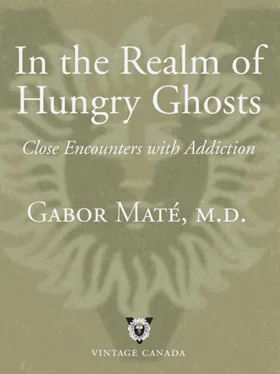I was all the more amused to read Thomas De Quincey’s account of how the poet Samuel Taylor Coleridge, his fellow opium user, attempted to impose regulation on his habit by similar means:
It is notorious that in Bristol he went so far as to hire men—porters, hackney-coachmen, and others—to oppose by force his entrance into any druggist’s shop. But, as the authority for stopping him was derived simply from himself, naturally these poor men found themselves in a metaphysical fix…And in this excruciating dilemma would occur such scenes as the following:
“Oh, sir,” would plead the suppliant porter—suppliant yet semi-imperative (for equally if he did, and he did not, show fight, the poor man’s daily five shillings seemed endangered)—“really you must not; consider, sir, your wife and—”
[ Coleridge ]—“Wife! What wife. I have no wife.”
Porter —“But really now, you must not sir. Didn’t you say no longer ago than yesterday—”
[ Coleridge ]—“Pooh, pooh! Yesterday is a long time ago. Are you aware, my man, that people are known to have dropped down dead for timely want of opium?”
Porter —“Ay, but you tell’t me not to hearken—”
[ Coleridge ]—“Oh, nonsense. An emergency, a shocking emergency, has arisen—quite unlooked for. No matter what I told you in times long past. That which I now tell you, is—that if you don’t remove that arm of yours from the doorway of this most respectable druggist, I shall have good ground of action against you for assault and battery.” 3

The practice of mindful awareness and emotional self-searching is helpful not only for the friends and families of addicted persons, but for everyone who deals with them on any level. It can powerfully enhance the work of health professionals, especially with hard-core drug addicts.
I still laugh when I recall the cocaine-and opiate-dependent Beverly’s frank acknowledgment of how she sometimes sees me, her physician. It happened three years ago.
It’s Monday morning. I’m in a good mood and Bev is my first patient. “I’m writing a book on addiction,” I tell her. “I wonder if I could interview you for it.”
Tears well into Beverly’s eyes and trickle down over her face where pick marks give her the look of a smallpox survivor. “I would be honoured,” she says, “but I’m surprised that you asked me. I imagined you thought of me only as a useless junkie.”
“Truth to tell, Bev, some days I do look at you like that. On those days I want only to shut you up, give you a quick prescription and have you out of my office so I can get on with it and see the next junkie. I’m sure, when I’m like that, you must think I’m quite a jerk.”
“Well,” says Bev slyly, her weeping now turned to mirth, “I could think of worse words than that.”
Though not completely surprising, Beverly’s comment was a jolt—a useful one. Like many doctors, nurses and others who work with addicts, I can be unmindful of the part that my own attitudes, moods, demeanour and body language play in setting up the interaction with these so-called “difficult patients.” We see their behaviour but not the messages we telegraph to them. We see their reactions but don’t realize that we ourselves may be creating what they are reacting to—not so much by what we say but by who we are being in the process. It is a common enough failing for human beings to be aware of the “what” but not of the “who” or the “how.”
In emergency rooms I have witnessed scenarios get completely out of hand to the point where security personnel are called to escort a hostile addict out of the hospital, and yet my observation was that the escalation could have been averted had some of the hospital staff not allowed themselves to become triggered. Once in the Portland staircase I intervened as an overzealous and tense ambulance attendant turned a relatively minor situation with a blood-covered patient into a full-blown confrontation. It was with some difficulty that I convinced him and the police, who had by then arrived, to take a few steps back so I could talk the enraged woman into a calmer state. It didn’t take much: just some quiet words and unthreatening body language. At other times, as the reader has seen, I’ve instigated a negative interaction. Whether I am a soothing presence or one that generates tension depends not on the situation but on my own state of mind. I am responsible.
There’s no question that hard-core addicts are a challenging population to work with, challenging because they trigger our judgments and anxieties and because they threaten the comfortable self-image we’ve worked so hard to establish for ourselves as cool, competent and powerful professionals. They stand quite outside the “nicely-nicely” ethic of respectable middle-class social interaction.
We have seen that addicts lack differentiation—the capacity to maintain emotional separateness from others. They absorb and take personally the emotional states of other people. Their diminished capacity for self-regulation leaves them easily overwhelmed by their automatic emotional mechanisms. They are prone to experience themselves as demeaned and abandoned by authority figures and caregivers, for reasons we have explored. When a busy physician or overworked nurse is short tempered and impatient with them, they interpret it as personal rejection. They react instinctively to the least tension or condescension on the part of caregivers. At the same time, it’s only natural that health care workers are especially prone to be stressed and impatient in the harried environments of overfull emergency departments and understaffed hospital wards. Irritability begets defensive hostility, and hostility sets off more reactive anxiety and rage. Two human beings—one who is seeking help and another who is committed to helping—are soon at logger-heads, quite contrary to their own intentions.
There would be much less confrontation and more effective care, I am convinced, if medical and allied staff all took some mindfulness training and if we practised observing, with awareness and curiosity, our mind-states and our reactions to these unconventional people. We would spare ourselves a lot of tension and stress, and protect our patients from further psychological trauma, if we learned to take responsibility for what we bring to our encounters with them. Five minutes of mindful meditation in the middle of a shift in the context of an emergency ward may seem like an absurd luxury, but the time saved and the bruised and inflamed emotions prevented would be a rich payoff. We may not be responsible for another’s addiction or the life history that preceded it, but many painful situations could be avoided if we recognized that we are responsible for the way we ourselves enter into the interaction. And that, to put it most simply, means dealing with our own stuff.
With mindful awareness we might still experience judgment arising, but we would accept that as our own problem. When feeling frustrated and angry in response to an uncooperative patient, we would recognize these emotions as our own and understand that we ourselves are fully responsible for how we deal with them. Then we don’t have to act out that anger and frustration on a patient or use authoritarian means to defend our self-image from imagined insult.
If we want to open up a healing space for others, we first have to find it in ourselves.

“I can find only three kinds of business in the universe: mine, yours, and God’s,” says the self-work teacher Byron Katie in her book, Loving What Is, which deserves to be high on the reading list of anyone who is in a close relationship with an addict. “For me,” Katie writes, “the word God means reality. Anything that’s out of my control, your control, and everyone else’s control—I call that God’s business.”
Читать дальше













